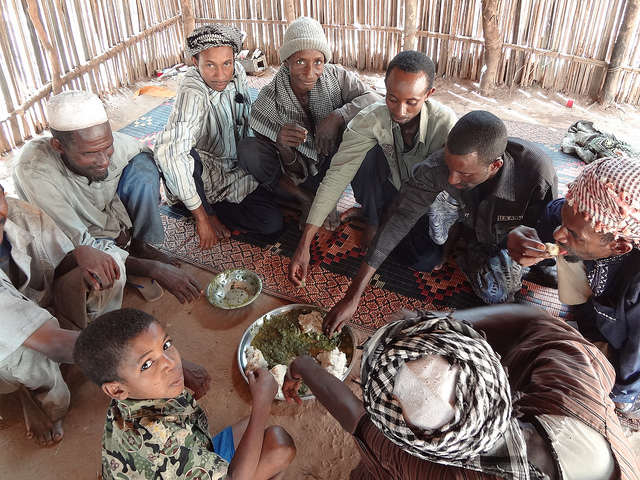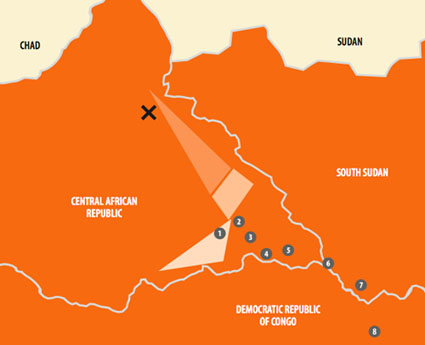
In late March and April 2012, I traveled to areas affected by the Lord’s Resistance Army in the Central African Republic to take a closer look at the ongoing military and non-military efforts by the U.S. advisors and the national armies in the region in their fight to end the Lord’s Resistance Army.
Today the Enough Project published a report, a video, and a slideshow based on the research. Here's the video:
The report shows that the U.S. advisors have had some success in gathering better intelligence about LRA movements, that cross-border coordination is improving gradually, and that the direct involvement of the United States on the ground has boosted the morale of national troops and contributed to a sense of hope among the local population.
But despite progress, the report concludes that fundamental challenges must be overcome for the mission to succeed in bring an end of the 25-year-long LRA crisis.
Small pockets of LRA continue to operate in the border region of South Sudan, the Democratic Republic of Congo, and the Central African Republic. This is no news to regular followers of the LRA crisis.
What we show in this report is that the LRA is able to hide and escape by moving north along the border between South Sudan and the Central African Republic, or CAR, as indicated with the long-triangle on the map. The black X shows the area where 17 civilians were looted and abducted by suspected LRA fighters in early March 2012.

The research revealed that main groups of the LRA, Kony’s included, are likely to have left their hideout in the Zemongo forest (the square area on the map) and moved toward Sudan. We were not able to verify recent allegations about the Sudanese government’s support for LRA, but we clearly show that the LRA is indeed able to move in this direction uninterrupted.
Okot Odhiambo, second in command of the LRA, is believed to have remained in the Zemongo forest to create a buffer-zone for the Kony group and to facilitate the transport of supplies—looted goods seized in operations by smaller groups of LRA along the border with Congo and further into CAR (indicated by the smallest triangle).
We also found that the number of Ugandan troops have been reduced considerably to just around 800 in CAR, which is much too few for the large area affected. Furthermore, the Uganda troops are unable to hinder the free movement of the LRA simply because they are not deployed to the northern part of the CAR. The numbered dots, 1 to 5, show the main areas of Ugandan deployment.
The Central African Republic’s national army has deployed approximately 100 poorly armed and equipped soldiers along the border with Congo who are hence not able to engage the LRA either.
The U.S. advisors are trying to improve the situation through training and coaching of the national armies, but they are not engaged in the actual fight against the LRA.
The current deployment and the lack of military capacity paint a rather bleak picture for the possibilities of ending the LRA anytime soon. The report offers a viewpoint counter to recent suggestions that the LRA is in “survival mode.” On the contrary, the LRA continues to be a highly effective rebel force that loots, abducts, displaces, and kill civilians across central Africa.
The regional governments must put politics aside and work together through a multifaceted strategy to end the LRA. The African Union and the Obama administration must increase pressure on the affected countries to address the LRA crisis holistically and wholeheartedly.
Read the full report: “Mission in the Balance: Challenges for U.S. Advisers in Helping to End the LRA”
Watch a photo slideshow from the research trip to the Central African Republic for a glimpse at daily life in and around the town of Obo, in CAR’s southeast corner, in spite of the LRA threat.
Read the report? Now take action. Please sign our letter asking President Obama to do more to end the LRA.
Photo: Mbororo cattle herders in Obo (Enough / Kasper Agger)
This post was updated to include the map and details about LRA movement referencing the map.

